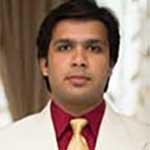Date :2020-01-13
Writen By :Srishti Hospital
Embryo transfer is considered to be a step in the process of assisted reproduction wherein embryos would be placed into the uterus. Complications or issues could be common for many couples who have faced multiple IVF failures or who seek embryo transfer. A doctor would recommend to scan and identify to make sure there are no complications before an embryo transfer.

Hysteroscopic polypectomy is one of the methods that doctors perform to evaluate issues with the uterine cavity. The doctor will try to check if there are any polyps or septums that becomes a hindrance in establishing a pregnancy.
Hysteroscopy and embryo transfer
A hysteroscope is inserted into the uterus through the vagina, which has a camera attached to it. This could show the image of the endometrium, and if there are any polyps, they could be easily removed from the roots. The polyps form as a result of an overgrowth of cells in the uterine lining. This procedure will be performed under general anesthesia. This is a minimally invasive procedure that can remove the polyps with substantially less risk than the traditional methods. After this procedure, it is unlikely that polyps would occur again in the same place.
While planning to perform IVF, a doctor would suggest for a hysteroscopic polypectomy to identify if there are any polyps. All the polyps will not be shown on the scan. A hysteroscopic polypectomy would show the image of a polyp in the monitor. This would help the doctor remove the polyp and then perform embryo transfer, which is the last step in IVF. If the polyp is left untreated, then the embryo might get implanted onto the polyp. When it gets implanted in the polyp instead of the uterine cavity, it will not get adequate blood supply. This would lead to recurrent pregnancy loss.
It is better to evaluate the uterine cavity before IVF to identify issues such as a polyp, septum, or any other related problems. Usually, small polyps will not affect pregnancy, whereas, a polyp that is more than 1cm will affect pregnancy. Embryo transfer or implantation of embryos is considered to be a costly procedure. Since patients perform this procedure, it is advised that they perform the same in the right place.

At Srishti Assisted Fertility & Advanced Laparoscopy Center, the doctor and team provide an effective treatment to remove uterine polyps and helps improve the fertility rate. Hence, they recommend identifying problems concerning the uterus before the embryo transfer.

Blog Reviewed By: Dr. Soumyaroop Dash
Mail Us: srishti.fertility@gmail.com
Book an appointment: fertility-clinic.in/book-appointment













